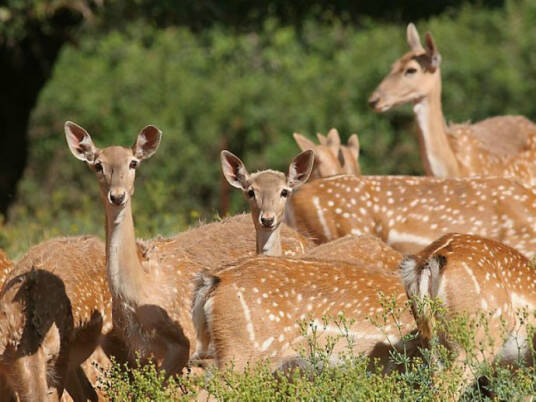Dama mesopotamica
IUCN
LCBasic Information
Scientific classification
- name:Dama mesopotamica
- Scientific Name:Dama mesopotamica,Mesopotamian Fallow Deer、Persian Fallow Deer,Mesopotamian fallow deer, Mesopotamian deer
- Outline:Ungulata
- Family:Artiodactyls Cervidae Fallen Deer
Vital signs
- length:No verification information
- Weight:No verification information
- lifetime:No verification information
Feature
The Persian fallow deer is larger than the fallow deer, and has larger antlers, but less palmate.
Distribution and Habitat
The Persian fallow deer is found in Khuzestan and Mazandaran provinces of Iran and on the islands of Lake Urmia.
Extinct in: Iraq, Jordan, Lebanon, Palestine, Syria, Turkey; reintroduced in: Israel.
The Persian fallow deer prefers to live in large woodlands.
Appearance
The fur is yellowish brown with white stripes, the upper part of the horns is flat or palm-shaped, the tail is slightly long, and the temperament is gentle. The Persian fallow deer is larger than the fallow deer, and the antlers are also larger, but less palm-shaped. It generally lives in the forests of the Mediterranean in southern Europe. Its fur is brown with white spots in the summer, and turns gray with black stripes in the winter. The antlers on its head are generally 60 cm long.
Details
The scientific name of the Persian fallow deer is Dama mesopotamica, and its foreign names are Mesopotamian Fallow Deer and Persian Fallow Deer. They were introduced to Cyprus in the Neolithic Age. They are found in many places, including Kirokitia. There are Greek records in 200 that they swam across the Mediterranean Sea with their heads on their backs, from Lebanon and Mount Carmel to Cyprus. The deer in Epirus, Greece also reached Corfu in this way. Red deer also cross the ocean during the migration season. But fallow deer do not have this behavior. They like to live in groups, feed on grass, twigs and leaves, and are particularly good at running.

Listed in the 2008 Red List of Threatened Species of the World Conservation Union (IUCN) ver 3.1 - Endangered (EN).
Protect wild animals and eliminate game.
Maintaining ecological balance is everyone's responsibility!








